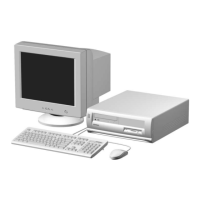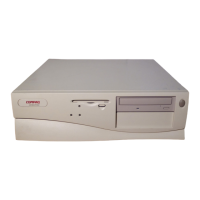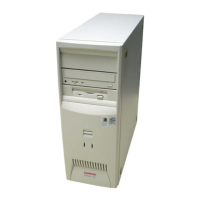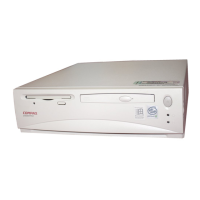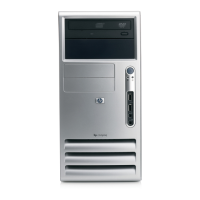Chapter 2 System Overview
Compaq Deskpro 4000 and 6000 Personal Computers
featuring the Pentium II Processor
First Edition - October 1997
2-12
2.4.5 GRAPHICS SUBSYSTEM
Two types of graphics controllers are used, depending on series. Table 2-3 outlines the key
differences between the graphics subsystems.
Table 2–3.
Graphics Subsystem Comparison
Table 2-3.
Graphics Subsystem Comparison
Deskpro 4000 Deskpro 6000
Graphics Controller Matrox MGA 1064SG-
based PCI Card
Matrox Millennium-II
AGP Card
Graphics Memory
Standard installed:
Expandable to:
2 MB SGRAM
4 MB SGRAM
4 MB WRAM
16 MB WRAM
Maximum Resolution
w/ standard mem.
w/ max. mem.
1280x1024 w/256 colors
1600x1200 w/256 colors
1600x1200 w/65K colors
1600x1200 w/16M colors
The Deskpro 4000 system features a PCI graphics card that is based on the Matrox MGA-
1064SG graphics accelerator. The card includes two megabytes of SGRAM as standard and can
be expanded to four megabytes by adding a 2-MB SGRAM module.
The Deskpro 6000 system features an AGP graphics card that is based on the Matrox MGA-
2164W graphics accelerator. This card includes four megabytes of WRAM as standard and can
be expanded to 8 or 16 megabytes by adding a 4- or 12-MB WRAM module respectively. Other
levels of WRAM expansion may be possible using Matrox WRAM expansion modules.
2.4.6 MASS STORAGE
All models include a 3.5 inch 1.44-MB diskette drive or an LS-120 drive installed. The Deskpro
4000 comes standard with a hard drive employing an IDE interface that supports UDMA mode 2
(33 MB/s). Master/slave drive selection is determined using the cable-select method, eliminating
the need to move jumpers when re-configuring drives. The Deskpro 6000 includes a hard drive
using an Ultra SCSI interface. The mass storage drive bay mounting capacity is determined by
the form factor (refer to Section 2.3, Mechanical Design).
2.4.7 SERIAL AND PARALLEL INTERFACES
All models include two serial ports (including one infrared (IrDa) port) and one parallel port
available at the rear of the unit chassis. The serial and parallel interfaces are provided by the
PC87307 I/O Controller component. Each serial port uses 16550/16450-compatible logic and is
compliant with the RS-232-C standard at baud rates up to 115,200. The parallel interface is
Enhanced Parallel Port (EPP1.9) and Enhanced Capability Port (ECP) compatible, and supports
bi-directional data transfers.
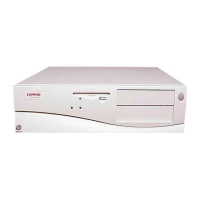
